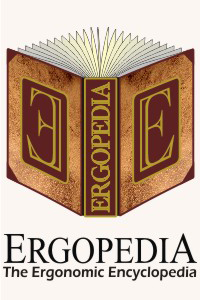Writing Surfaces
What are Writing Surfaces?
Writing Surfaces are common workstation accessories used to
improve the ability to write notes and edit physical
documents. Even in the contemporary modern office,
there is a surprising amount of paperwork and accompanying
'real estate' in the workstation to create, edit and
annotate this material. While a flat surface should be
all that is required (i.e. any tabletop), creating a viable
writing surface while also working on a computer can pose a
challenge.
Typically this type of accessory provides the ability to
improve the physical location and angle of the writing easel
to facilitate writing when intermixed with other
tasks. Other secondary functions of Writing Surfaces
are to function as Document
Holders and Book
Holders a task for which they are quite suitable as
most writing activities also involve reading.
What are the Ergonomic Benefits of a Writing Surface?
Writing Surfaces can help to ensure proper posture by
placing materials that need to be written on Inline,
or in a less awkward position in the workstation of a
user. This helps to reduce Overextension when placing and removing documents from the writing
area.
Alternatively, Writing Surfaces can reposition the writing
area to be immediately to the left or right of the monitor
at a substantially different angle than the desktop, which
can improve issues with neck posture by removing the need to
look down at reference materials and support the head in
that posture for extended periods of time.
What are Potential Concerns when Considering a Writing
Surface?
Writing Surfaces are not ideal for all types of reference
materials. Thicker piles of papers, binders, file
folders and books can be difficult to properly position on
Writing Surfaces. Some materials may have to be
'wedged open' (e.g. hard-cover books and file folders) and
no Writing Surface has features which will address all these
media types.
Writing Surfaces do not typically make great Book
Holders. As a multi-purpose worksurface to put
awkward materials on, they may be adequate, but if the
primary task of the surface is not extensive writing
activities, the better choice of product would likely be a Book
Holder.
Writing Surfaces must be able to be set up so that they are
solid and stable, as they will typically have to take the
partial or complete weight of the arm when being used.
Failure to take this into account will lead to an unusable
writing easel, without strategies to address this (using
soft lead pencils or gel pens, and avoiding resting the arm
heavily on the Writing Surface).
For What Types of Tasks / Users are Writing Surfaces
Suitable?
When writing, the optimal angle is significantly more
horizontal than vertical (somewhere between 0° and
40°). When viewing reference materials, the optimal
angle is significantly more vertical than horizontal
(somewhere between 50° and 90°). As such for
applications where writing on materials will be a regular
component of the function of the device, Writing Surfaces
are suitable. However if the accessory is primarily
being used for viewing and occasional brief writing on most
types of loose materials, consider Document
Holders as an alternative.
What Physical Injuries or Conditions Typically Benefit
from a Writing Surface?
Writing Surfaces can be of benefit to a wide variety of
individuals including individuals with conditions such as Thoracic
Outlet Syndrome, Cubital
Tunnel Syndrome (by preventing pressure on the elbow).
